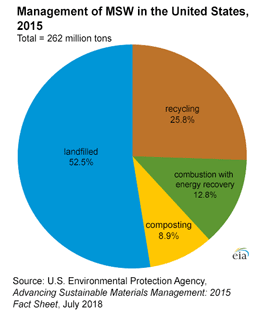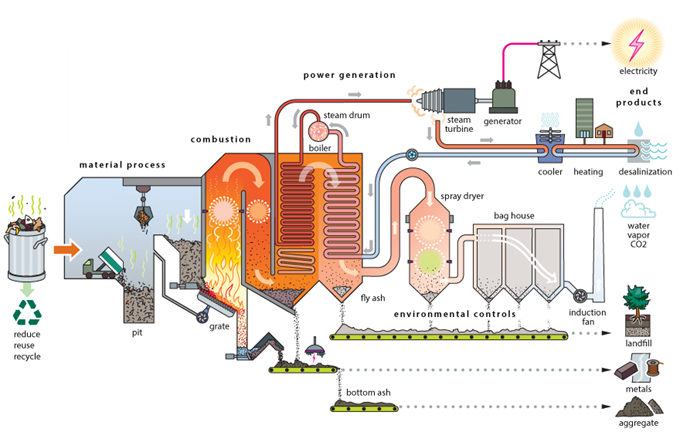Energy from municipal solid waste
Municipal solid waste (MSW), often called garbage, is used to produce energy at waste-to-energy plants and at landfills in the United States. MSW contains
- biomass, or biogenic (plant or animal products), materials such as paper, cardboard, food waste, grass clippings, leaves, wood, and leather products
- nonbiomass combustible materials such as plastics and other synthetic materials made from petroleum
- noncombustible materials such as glass and metals
In 2015, about 262 million tons of MSW were generated in the United States, of which
- 52.5% was landfilled
- 25.8% was recycled
- 12.8% was burned with energy recovery
- 8.9% was composted
Waste-to-energy plants make steam and electricity
MSW is usually burned at special waste-to-energy plants that use the heat from the fire to make steam for generating electricity or to heat buildings. In 2016, 71 U.S. power plants generated about 14 billion kilowatthours of electricity from burning about 30 million tons of combustible MSW. Biomass materials accounted for about 64% of the weight of the combustible MSW and for about 51% of the electricity generated. The remainder of the combustible MSW was nonbiomass combustible material, mainly plastics. Many large landfills also generate electricity by using the methane gas that is produced from decomposing biomass in landfills.
Waste-to-energy is a waste management option
Producing electricity is only one reason to burn MSW. Burning waste also reduces the amount of material that would probably be buried in landfills. Burning MSW reduces the volume of waste by about 87%.







